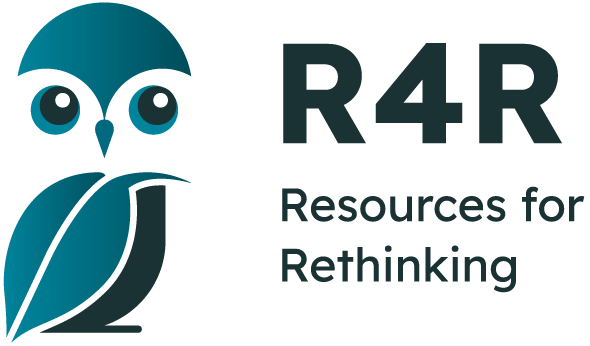- Home
- Tutorial
- Resource Guides
- Focus Areas
- LSF Programs
-
Professional
Development - Review Process
-
A project of LSF

Search for Resources
Description
This lesson introduces students to the concept of sustainable development and provides them with an opportunity to explore its principles.
The three components of sustainability: economy, environment, and society are explained to the class. Students then complete a Venn diagram exercise to analyze local activities with respect to sustainability. They present their analysis to the class. Guiding questions supplied by the resource provide an effective synopsis of the key learning points.
General Assessment
What skills does this resource explicitly teach?
Analyzing activities with respect to sustainability.
Strengths
This is a concise resource that allows the teacher to address the concept of sustainability. There is ample background information and guiding questions. Students analyze activities that they are familiar with because they select the activity.
Weaknesses
The resource does not seem to consider the impacts on some groups of people when changes are made.
Values clarification needs to be encouraged with students considering why they should care if the actions being analyzed are sustainable.
Relevant Curriculum Units
The following tool will allow you to explore the relevant curriculum matches for this resource. To start, select a province listed below.
- Step 1Select a province
- Alberta
- Step 2Select a grade level
- Grade 9
- Step 3Select a subject
- Science
- Step 4Relevant matches
- Environmental Chemistry
- Grade 10
- Step 3Select a subject
- Social Studies
- Step 4Relevant matches
- Social Studies 10-1(Perspectives on Globalization) Globalization & Sustainable Prosperity
- Social Studies 10-4 (Living in a Globalizing World) Globalisation and Sustainable Prosperity
- Grade 12
- Step 3Select a subject
- Geography
- Step 4Relevant matches
- World Geography 30: World Patterns of Humankind's Use of the Earth
- British Columbia
- Step 2Select a grade level
- Grade 12
- Step 3Select a subject
- Environmental Science
- Step 4Relevant matches
- Environmental Science 12: Living sustainably supports the well-being of self, community, and Earth.
- Environmental Science 12: Sustainable land use is essential to meet the needs of a growing population
- Manitoba
- Step 2Select a grade level
- Grade 7
- Step 3Select a subject
- Social Studies
- Step 4Relevant matches
- People & Places in the World: Human Impact in Europe or the Americas
- Grade 10
- Step 3Select a subject
- Science
- Step 4Relevant matches
- Life Systems
- Senior 2 Science: Dynamics of Ecosystems
- Grade 11
- Step 3Select a subject
- Science
- Step 4Relevant matches
- Current Topics in the Sciences 30S: Science, Technology, Society & the Environment
- Grade 12
- Step 3Select a subject
- Geography
- Step 4Relevant matches
- World Geography: A Human Perspective - World Resources, Energy, and Environment
- Social Studies
- Step 4Relevant matches
- Citizenship and Sustainability: Area of Inquiry: Consumerism
- Citizenship and Sustainability: Area of Inquiry: Environment
- Global Issues
- Global Issues
- New Brunswick
- Step 2Select a grade level
- Grade 12
- Step 3Select a subject
- Environmental Science
- Step 4Relevant matches
- Advanced Environmental Science 120:Introduction to the human sphere
- Introduction to Environmental Science 120: Sustainable Development
- Newfoundland & Labrador
- Step 2Select a grade level
- Grade 10
- Grade 11
- Grade 12
- Step 3Select a subject
- Environmental Science
- Step 4Relevant matches
- Environmental Science 3205: Introduction to Environmental Science
- Environmental Science 3205: Land Use & the Environment
- Northwest Territories
- Nova Scotia
- Nunavut
- Step 2Select a grade level
- Grade 10
- Step 3Select a subject
- Social Studies
- Step 4Relevant matches
- Social Studies 10-1(Perspectives on Globalization) Globalization & Sustainable Prosperity
- Grade 12
- Step 3Select a subject
- Environmental Studies
- Step 4Relevant matches
- Environmental Studies 35: Northern Environmental Issues
- Ontario
- Step 2Select a grade level
- Grade 11
- Step 3Select a subject
- Environmental Science
- Step 4Relevant matches
- Environmental Science (Univ/College Prep.) Scientific Solutions to Contemporary Environmental Challenges
- Environmental Science (Univ/College Prep.) Sustainable Agriculture and Forestry
- Environmental Science (Workplace Prep.) Human Impact on the Environment
- Environmental Science (Workplace Prep.) Natural Resource Science and Management
- Grade 12
- Step 3Select a subject
- Economics
- Step 4Relevant matches
- Making Personal Economic Choices (Workplace Prep.) Developing Financial Literacy
- Geography
- Step 4Relevant matches
- The Environment & Resource Management (Univ./College Prep.):Sustainability and Stewardship of Natural Resources
- World Geography: Urban Patterns & Populations (Univ. / College Prep.): Sustainability and Stewardship
- Prince Edward Island
- Step 2Select a grade level
- Grade 10
- Step 3Select a subject
- Science
- Step 4Relevant matches
- Science 431A: Life Science, Sustainability of Ecosystems
- Grade 12
- Step 3Select a subject
- Environmental Science
- Step 4Relevant matches
- Environmental Science 621A: Introduction to Environmental Science
- Geography
- Step 4Relevant matches
- Geography 621A Global Issues: Introduction- What is a global issue?
- Geography 631A Global Issues: Introduction - What Is a Global Issue
- Quebec
- Step 2Select a grade level
- Grade 10
- Step 3Select a subject
- Science & Technology
- Step 4Relevant matches
- Environmental Science & Technology: The Earth and Space
- Saskatchewan
- Step 2Select a grade level
- Grade 10
- Step 3Select a subject
- Science
- Step 4Relevant matches
- Science 10: Climate and Ecosystem Dynamics
- Grade 11
- Step 3Select a subject
- Social Studies
- Step 4Relevant matches
- Social Studiees 20:World Issues - Environment
- Grade 12
- Step 3Select a subject
- Social Studies
- Step 4Relevant matches
- Canadian Studies 30: Economic Development
- Yukon Territory
- Step 2Select a grade level
- Grade 12
- Step 3Select a subject
- Environmental Science
- Step 4Relevant matches
- Environmental Science 12: Living sustainably supports the well-being of self, community, and Earth.
- Environmental Science 12: Sustainable land use is essential to meet the needs of a growing population
Themes Addressed
Citizenship (1)
- Sustainable Consumption
Human Health & Environment (1)
- Quality of Life
Land Use & Natural Resources (1)
- Sustainable Urbanization
Sustainability Education Principles
| Principle | Rating | Explanation |
|---|---|---|
| Consideration of Alternative Perspectives | Good | Students generate which activities they will analyze with respect to sustainability from three categories stipulated in the resource. |
Consideration of Alternative Perspectives:
| ||
| Multiple Dimensions of Problems & Solutions | Very Good | Students use a Venn diagram of "environment, society, economy" to analyze the issues. Questions are provided to guide discussion in each area examined. |
| Multiple Dimensions of Problems & Solutions: Effectively addresses the environmental, economic and social dimensions of the issue(s) being explored.
| ||
| Respects Complexity | Satisfactory | |
| Respects Complexity: The complexity of the problems/issues being discussed is respected. | ||
| Acting on Learning | Satisfactory | |
| Acting on Learning: Learning moves from understanding issues to working towards positive change — in personal lifestyle, in school, in the community, or for the planet
| ||
| Values Education | Satisfactory | Student reflection is addressed in the assessment questions but they do not necessarily clarify their values. |
| Values Education: Students are explicitly provided with opportunities to identify, clarify and express their own beliefs/values. | ||
| Empathy & Respect for Humans | Poor/Not considered | |
| Empathy & Respect for Humans: Empathy and respect are fostered for diverse groups of humans (including different genders, ethnic groups, sexual preferences, etc.). | ||
| Personal Affinity with Earth | Poor/Not considered | |
| Personal Affinity with Earth: Encourages a personal affinity with -the natural world.
| ||
| Locally-Focused Learning | Very Good | Student-selected activities are considered. These activities relate to their own lives. |
| Locally-Focused Learning: Includes learning experiences that take advantage of issues/elements within the local community.
| ||
| Past, Present & Future | Satisfactory | The discussion focuses on the present with students considering how they will make changes in the future. |
| Past, Present & Future: Promotes an understanding of the past, a sense of the present, and a positive vision for the future. | ||
Pedagogical Approaches
| Principle | Rating | Explanation |
|---|---|---|
| Open-Ended Instruction | Good | |
| Open-Ended Instruction
: Lessons are structured so that multiple/complex answers are possible; students are not steered toward one 'right' answer. | ||
| Integrated Learning | Satisfactory | |
| Integrated Learning: Learning brings together content and skills from more than one subject area
| ||
| Inquiry Learning | Satisfactory | |
| Inquiry Learning: Learning is directed by questions, problems, or challenges that students work to address.
| ||
| Differentiated Instruction | Good | There are different sets of questions for different levels of student ability. |
| Differentiated Instruction: Activities address a range of student learning styles, abilities and readiness.
| ||
| Experiential Learning | Poor/Not considered | |
| Experiential Learning: Authentic learning experiences are provided
| ||
| Cooperative Learning | Satisfactory | |
| Cooperative Learning: Group and cooperative learning strategies are a priority.
| ||
| Assessment & Evaluation | Good | |
| Assessment & Evaluation: Tools are provided that help students and teachers to capture formative and summative information about students' learning and performance. These tools may include reflection questions, checklists, rubrics, etc. | ||
| Peer Teaching | Satisfactory | |
| Peer Teaching: Provides opportunities for students to actively present their knowledge and skills to peers and/or act as teachers and mentors.
| ||
| Case Studies | Satisfactory | Videos of various case studies are listed as additional resources. |
| Case Studies: Relevant case studies are included. Case studies are thorough descriptions of real events from real situations that students use to explore concepts in an authentic context. | ||
| Locus of Control | Satisfactory | Students select the area and activity they want to analyze. |
| Locus of Control: Meaningful opportunities are provided for students to choose elements of program content, the medium in which they wish to work, and/or to go deeper into a chosen issue. | ||

